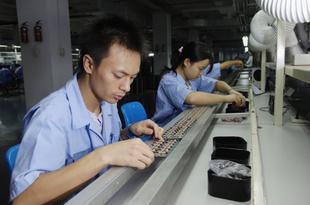Understanding Risk of Forced Labour in Public Buyer Supply Chains
Electronics Watch has developed a new forced labour risk chart that allows public buyers to quickly understand the risk composition of the electronics they buy. The chart focuses on assembly and component levels, and the country of origin. This is done by combining analysis of specific regional conditions and supply chain characteristics. The Australian Government will be among the first to use this tool to better understand and respond strategically to modern slavery risks in its ICT supply chains.
Over recent years, Electronics Watch has collected a growing body of empirical evidence of forced labour in many forms and at different levels of the supply chain. We have evidence of debt bondage and restrictions on freedom of movement of migrant workers, forced overtime, deception about employment and working conditions, and forced internships. This body of evidence has allowed us to develop a typology of forced labour (based on the ILO Forced Labour Convention, 1930 (No. 29)) to help monitoring partners discover and address risk in their locations. It also supports Electronics Watch affiliates to strengthen their Modern Slavery risk assessments and supply chain engagement.
We can now combine this regional perspective on forced labour with a supply chain risk analysis that focuses on supply chain visibility and capital investment. More strategic parts of the supply chain are more scrutinized by brand companies, reducing risk. Quality of social audits also influence visibility in the supply chains. Poorer quality industry audits mask some of the risk in factories with higher visibility. Capital- intensive operations in general require employees with a higher education and lower workforce turnover rates. This also results in lowering the risk profile.
We invite affiliates to get in touch with us to discuss how they can use this tool in their supplier engagement.


